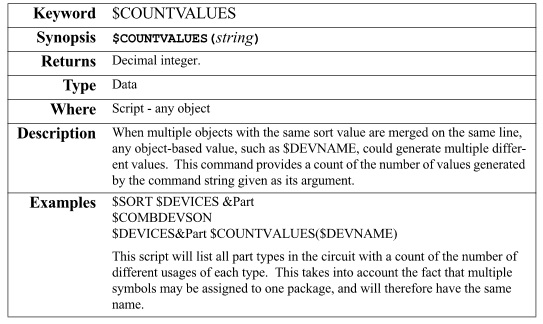This manual provides an overview of the script language and then provides reference information on specific Export tool features and applications. Part 2—Script Keyword Reference provides detailed information on individual commands. If you are new to writing DesignWorks scripts, you may wish to start by looking at the examples in “Script Examples” on page 38.
A knowledge of the material in this chapter is not necessary in order to use the scripts provided with DesignWorks. See the Chapter entitled “Report Generation and Scripting” in the DesignWorks 5.0 User’s Guide for more information on general operation of the Export tool from a user’s point of view.
View the Full Manual Section


